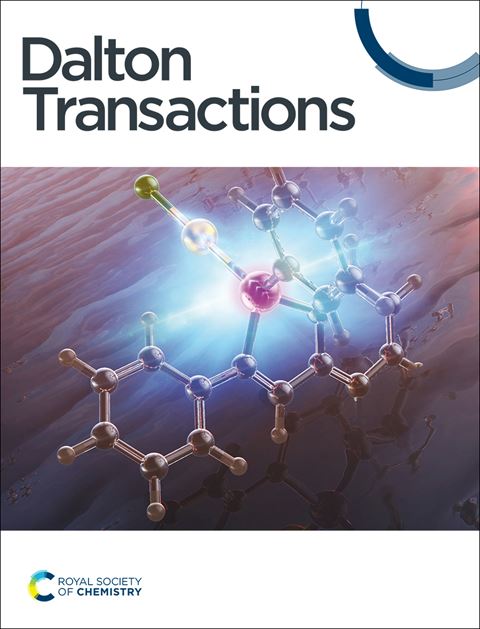The Role of Ancillary Ligands on Benzodipyridophenazine Based Ru(II)/Ir(III) Complexes for Dark and Light Toxicity against TNBC Cells¥
IF 3.5
3区 化学
Q2 CHEMISTRY, INORGANIC & NUCLEAR
引用次数: 0
Abstract
The study investigated the impact of benzodipyridophenazine-based Ru(II) and Ir(III) complexes (Ru1, Ru2, Ir1, and Ir2) on their anticancer activity. Metal complexes displayed three significant absorption bands because of intra-ligand charge transfer (ILCT), ligand-to-ligand charge transfer (LLCT), and metal-to-ligand charge transfer (MLCT). Binding studies with biomolecules has been performed with the complexes along with the ligand, and it was found that after attaching with Ru(II)/Ir(III),properties of the ligands has enhanced. In vitro, screening identified that, complex [(η5-Cp*)IrIIICl(κ2-N, N-benzo[i]dipyrido[3,2-a:2',3'-c])phenazine (Ir1) exhibited the highest potency and selectivity (IC50 ~ 2.14 µM, PI > 13) under yellow light irradiation. The photo-toxicity trend was Ir1>Ru1>Ir2>>Ru2, which was found to be directly correlated with the release of singlet oxygen quantum yield (1O2). Chloro-substituted complexes (Ir1, Ru1) are effective for hypoxic tumor treatment, particularly Ir1 which can generate high amounts of reactive oxygen species (ROS, Type I PDT) in cells under photo irradiation. The high value of fluorescence quantum yield (fφ = 0.26) and significant emission at λ = 571 nm of Ir1 certainly helps in a bio-imaging application. Colocalisation study and DCFDA studies with Ir1 revealed that, it can accumulates in the mitochondria, leading to the depolarization of the mitochondrial membrane. These studies confirms the complex Ir1 is a promising candidate for TNBC treatment in hypoxic tumors, with efficacy comparable to the current PDT drug, photofrin.求助全文
约1分钟内获得全文
求助全文
来源期刊

Dalton Transactions
化学-无机化学与核化学
CiteScore
6.60
自引率
7.50%
发文量
1832
审稿时长
1.5 months
期刊介绍:
Dalton Transactions is a journal for all areas of inorganic chemistry, which encompasses the organometallic, bioinorganic and materials chemistry of the elements, with applications including synthesis, catalysis, energy conversion/storage, electrical devices and medicine. Dalton Transactions welcomes high-quality, original submissions in all of these areas and more, where the advancement of knowledge in inorganic chemistry is significant.
 求助内容:
求助内容: 应助结果提醒方式:
应助结果提醒方式:


